Restaurants are all about the experience. From your marketing to your menu to your main courses, your restaurant branding communicates people who you are and what to expect from you. The taste of the food, the attitude of the staff, the style of the decor all need to work together to create something memorable.
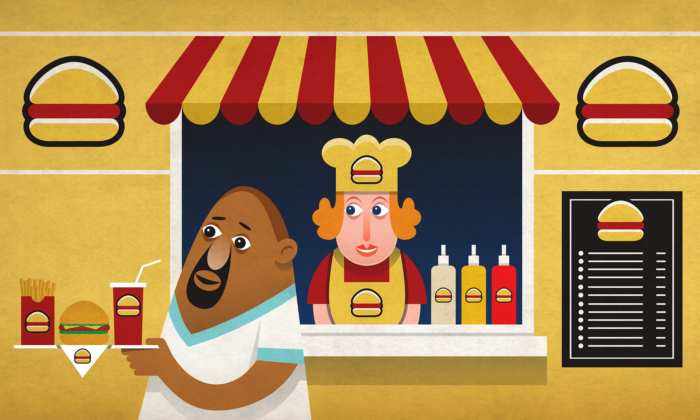
This restaurant branding guide will help you form and strengthen your own branding. We’ll cover what you’ll need to consider as you develop your brand, what makes restaurant branding successful and how branding can influence a restaurant’s reputation and its relationship with customers.
So what are some of the important things to work on when building your restaurant brand?
Define your restaurant brand
—
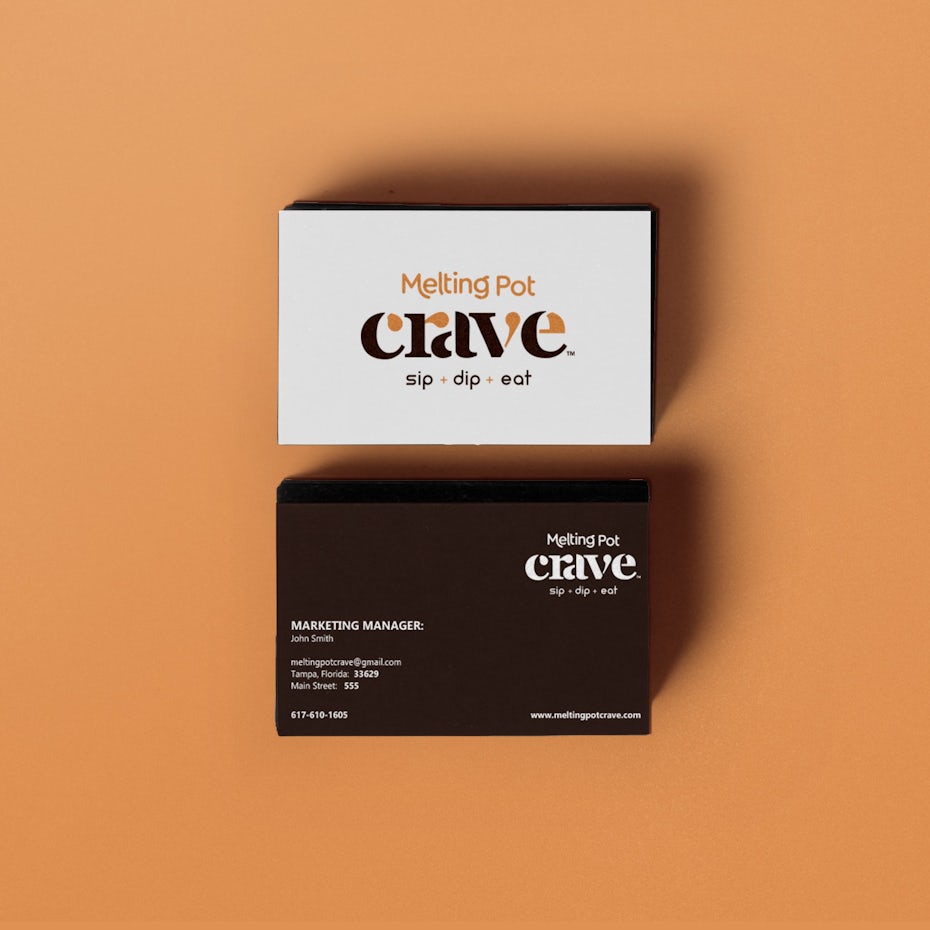

In order to build your identity, you need to clearly know who you are as a brand. Start by asking yourself these three essential questions:
- Who are you as a restaurant?
- What are you doing?
- Why are you doing it?
Think about what matters to you and how your restaurant operates in your field. Explore the story of how you got started and where you want to go. Your answers to these questions will help set the foundation of your brand. Remember that your restaurant brand represents who you are, and your strategy can only start once you know the answers to these questions.
Mission and values
If you don’t have one already, focus your brand by writing out a mission statement and a list of core values. A mission statement is a useful way of defining your restaurant’s goals and answering the “why” of your work. Core values identify your central beliefs, which act as a guide for your restaurant so everyone can work toward that mission.
Having a mission statement will help not only in the initial phase of brand-building your brand, but also throughout the growth of your restaurant. By closely adhering to your mission, you’ll set yourself apart from competitors, build trust with customers and create a consistent brand in which all facets of your identity are rooted in the same culture and values.
Take Chipotle, for example. Their mission statement is to provide “food with integrity”. Their core values are: “farming with responsibility” and “serving as an example to the entire food industry.”
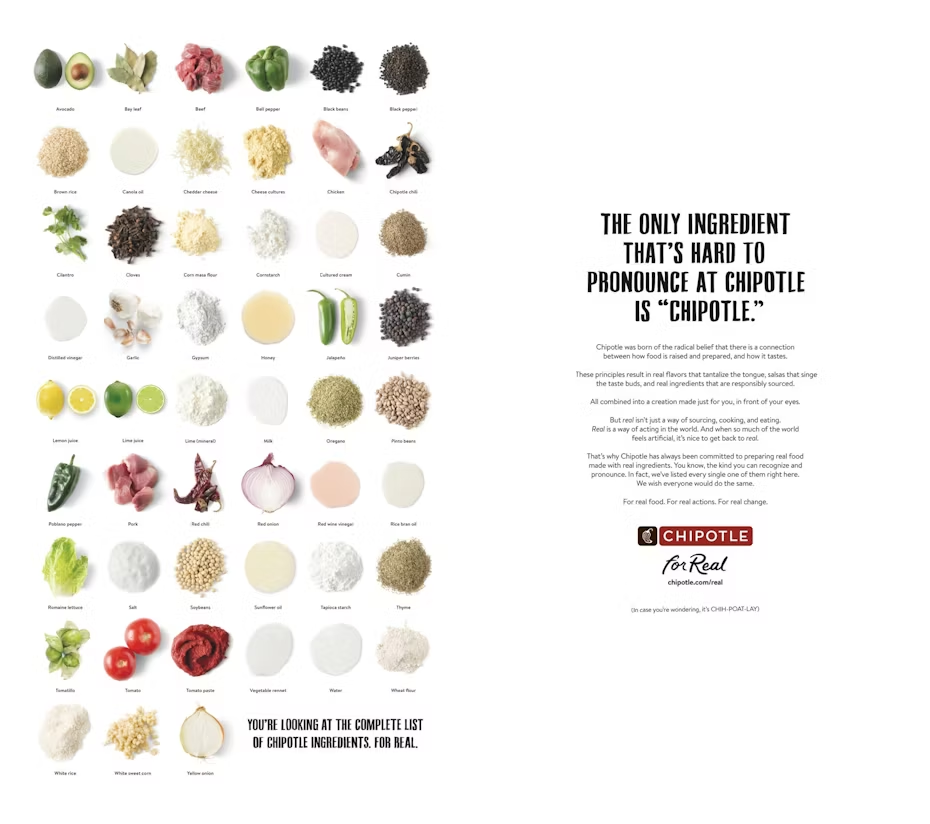
Their “For Real” campaign expresses this mission and values by highlighting the restaurant’s ingredients and consistency across stores. Even with their website copy—“With every burrito we roll or bowl we fill, we’re working to cultivate a better world.”—Chipotle cultivates a consistent, mission-based restaurant brand.
Brand personality
Your brand has a personality. It looks a certain way. It talks a certain way. This is how your customers emotionally connect with your restaurant.
Start by imagining your brand as a person. How do they speak and look? What are they interested in? Are they fun or serious? Excited or calm? Together, these traits create your brand personality, which you can infuse into all facets of your restaurant.
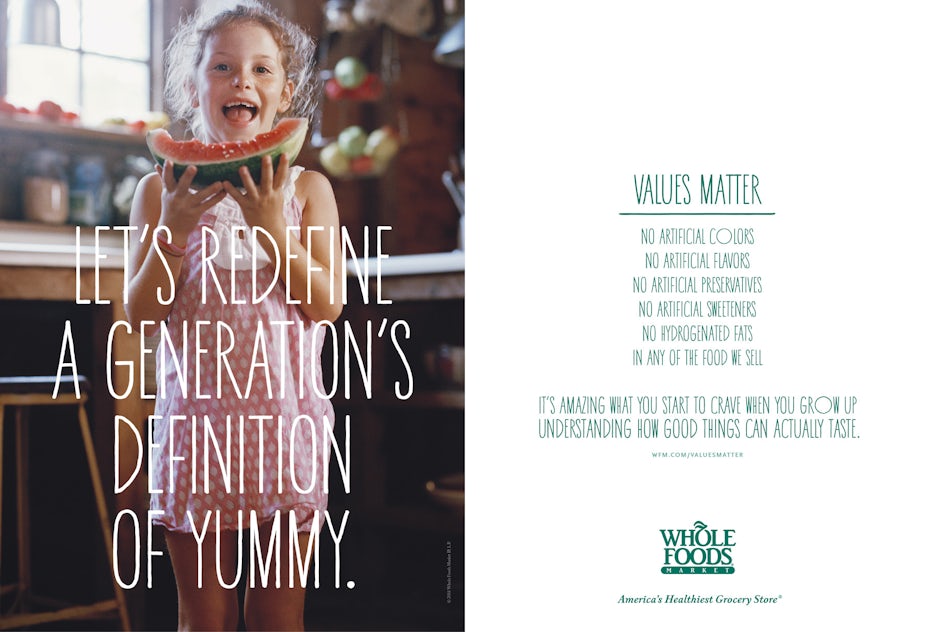
Let’s take Whole Foods. What comes to mind about their overarching characteristics? Whole Foods is home-grown, honest and healthy. They are environmentally engaged. As you can see, the brand personality comes through easily as what you are known and remembered for, it’s the impression your brand leaves on the mind’s of the outside world.
Your market

It’s the most important question for any new brand: what makes you different? As you begin to define yourself, get to know your competition, too. Competitor research will help your brand be unique among so many others. In today’s market, restaurants launch because of food trends or even just because of Instagram. Now more than ever, you have to stand out.
Take a look at similar restaurants in your city and elsewhere. Research their company, their cuisine, and their brand experience. Use them as inspiration to develop creative ideas that set your brand and restaurant apart. When observing your competition, ask yourself these questions:
- What do they look like (for example: visuals on websites, menus, social media).
- What are their mission and values?
- Which customers are they trying to reach?
- How do they sound and interact?
- How are customers responding to their brand?
- What can I do to encourage a customer to pick me and not them?
Your customers
Brand loyalty is vital for your restaurant brand. Initial intrigue and hype are only the first steps, it’s the continuity that has the power to really make or break a restaurant.
That’s why you must get acquainted with your customers. Who are you hoping to have at your restaurant and what will they want from you? Engaging in customer service, paying attention to reviews and learning from your patrons are essential to building and maintaining a brand experience.

Understand every point of interaction with the customer, and make sure that each one reflects your identity. For example, an environmentally-conscious, fast-casual restaurant that does not have a compost bin might raise some eyebrows. Likewise, a child-friendly restaurant that does not take reservations may also be an odd choice for families who do not want to spend a long time waiting with young children.
Develop your restaurant brand identity
—
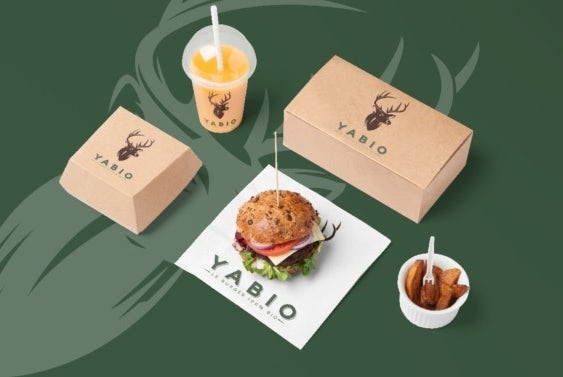
Restaurants have many points of customer interaction, ranging from them placing reservations to waiting in line at the door to the visual experience of the restaurant’s interior. Each of these interactions can be an opportunity to build your brand, but they all need to be very clearly connected to one another.
Let’s take a moment to expand on these opportunities by thinking about how we experience restaurants:
- The Internet: Before customers even set foot in your restaurant, they’ll likely come into contact with your restaurant brand via your website or social media page. Here, they will have an initial introduction to the visual style and the cuisine.
- The Exterior: When customers arrive, the exterior reveals the style and tone of the restaurant. The exterior also typically has signage with the logo, typography and brand colors.
- The Interior: Inside, a host or cashier greets guests. The interior design continues to convey the restaurant’s tone. The smell of food fills the air.
- The Table: Once seated, customers may see the menu or simply sit down to enjoy their food. At a formal restaurant, a server will greet them and take their orders.
Developing your design and building your brand design assets will help you connect all the elements that create your brand identity, your core brand assets.
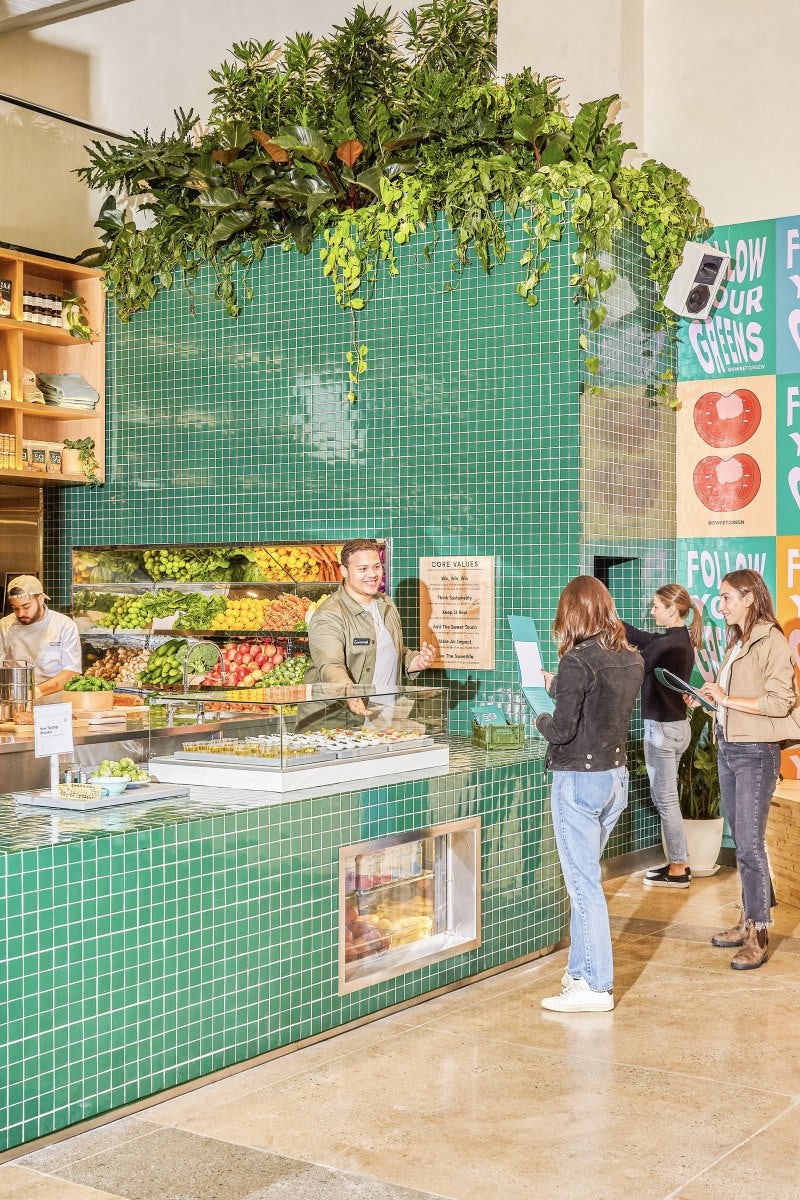
To give an example of how the key design elements inform each other in restaurant branding, we can take a look at Sweetgreen’s brand. Sweetgreen is a salad chain, catering mainly to a lunch, work crowd. Who is Sweetgreen as a brand? They are a fast-casual brand who want to connect people with real, visible, directly sourced ingredients. They place an emphasis on how they would like to influence people to eat healthier and with more awareness.
With these in mind, their choice of the clean, spacious, all lower case type makes a lot of sense. It evokes simplicity, directness and honesty. Color palette? Tones of greens and white, muted and organic. The imagery on their menus in store, the App and the website are of ingredients, farmers, staff and interiors. It’s never anything more than Sweetgreen itself offers.
Once you have your brand identity in place, create a style guide to make sure that all your design elements are harmonious and communicate your identity.
Brand voice
Branding isn’t just about design. Your brand voice is an integral part of your brand identity because your brand voice may dictate other stylistic choices. So, for example, if your brand voice is corporate and buttoned up, you’d likely want to stick to a more traditional font. If your brand voice is loud and bold, you’d want to build a loud and bold color palette to go right along with it.
Learn how to establish a successful brand voice here.
Typography
Typography covers both the fonts you choose and how you use them in your designs. Your typography sends a message to your audience about who you are as a brand and what they can expect from working with you. Make sure the fonts you choose are in line with your brand personality.
Here’s a quick look at how to choose fonts for your brand.

Color palette
Color is a powerful thing. People have strong associations with color, and when you understand those associations, you can use color strategically to inspire specific thoughts, emotions and reactions with your audience.
Learn more about how to select your brand colors and how color psychology works.
Images
Using the right images can forge a deep emotional connection with your customers. From billboards to Instagram, websites to print ads, images are an opportunity to communicate with your potential customer. In order to find the right images, you need to source visuals that your audience will respond to.
Learn more about how to select imagery to represent your brand.
Designing your brand elements
—
Once you have defined a clear brand identity and voice, you can begin to actually design your core brand elements. From your storefront to your menu to your social media, there are countless opportunities for a visual, restaurant branding.
Logo
Your logo is the core of your brand and the rest of the design elements are organically born from it. But what makes designing a restaurant logo different from any other brand logo? Through the right logo colors, shapes and words, you can give your customers a taste of what’s to come.



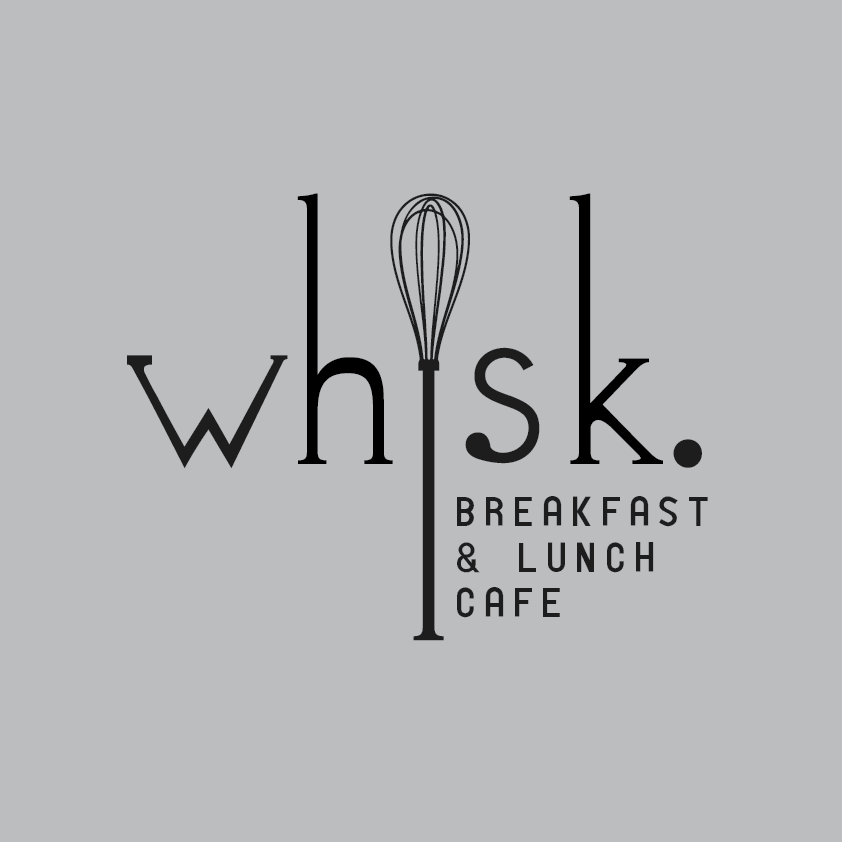


But more than just a nod to the food, a logo can bring your entire brand personality to life. A nostalgic serif with a monochrome background can evoke classical, timeless tastes, as seen in the Cafe Bari logo. The black and gold logo for Provision, a cocktail lounge, turns into a beautiful detail on menus, napkins and business cards. Want more logo design tips? Learn how to design a logo here.
Website

Before anyone decides to come to your restaurant, they’ll likely find you online. That’s why your website is so important. Work with a skilled web designer who understands your brand and can translate your brand identity seamlessly onto the web. Learn all about the step-by-step process of creating a website here.
Make sure you stay consistent with your brand identity, while including these key details:
- Your story: Consider sharing your story and your mission statement. Or even introduce the chef. These personal stories can connect people with your brand.
- Menu: Post a menu to let potential patrons know what you’ll be serving and what your price point is.
- Interior photos: Use interior photos to communicate the vibe of your restaurant, draw in newcomers, and give customers an idea of what a dining experience will be like.
- Food photos: More than anything else, the food is the star of your brand. Beautiful food photos will leave a lasting impression. Make sure each dish looks delish.
- Reservations: If you’re a formal restaurant, let customers know how to get a reservation (if you take them at all) with a phone number or an online booking platform.
- Location: Folks need to find you. Consider whether you would like to have a simple address or an interactive map.
>> Get a beautiful website designed
Social media
Social media is your restaurant’s way of engaging in conversations. This is where your brand voice comes into play. The frequency, the tone, the humour. All of these need to be reflected and absolutely unmistakable as your restaurant brand’s voice.
Will you have a social media team that engages with feedback one-on-one? Or maybe your restaurant brand is more innovative and risky rather than comforting, in which case social media engagement may not be a priority while sharing on social media may remain as one.
>> Get stunning social media design
Physical space: Menu, signage, interiors & more
The real-world, tactile elements in your restaurant help to reinforce your brand identity with customers. All these objects should be able to tell the same story, even if they don’t look exactly the same. Design these objects as stand-alone pieces so each one encompasses the design identity on their own.
Menu
Your restaurant’s menu is the design element that directly connects people to your food, so make sure your menu looks appealing, on-brand and professional. Through words, color, shapes and images, give your customers a taste of what’s to come. Learn more about effective menu design.
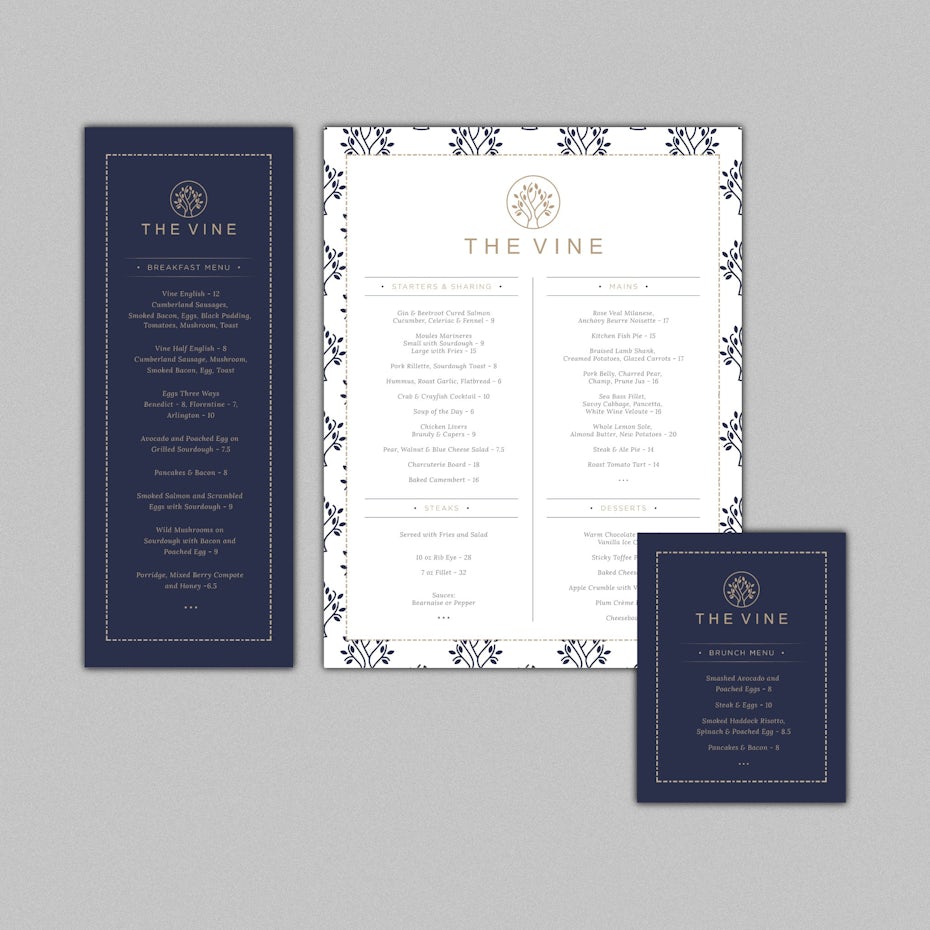
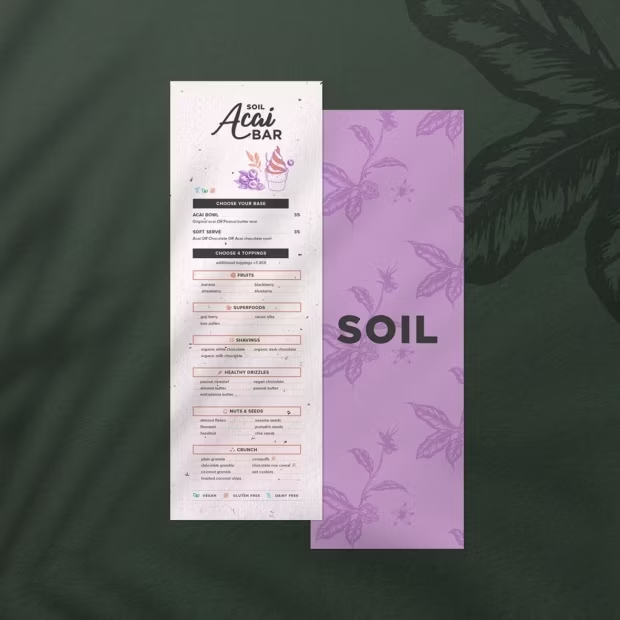
Signage
While your main signage is the exterior sign, don’t forget the smaller signs throughout your restaurant, including staff space, restrooms, hours of operation, and more. Your branding needs to be harmonious on every informational object in the space.
>> Get professional signage design

Interior
Inside your physical restaurant space, pay attention to your staff’s attire, table decor, dishware and more. Use your color palette, style guide and brand values to direct your interior design choices.
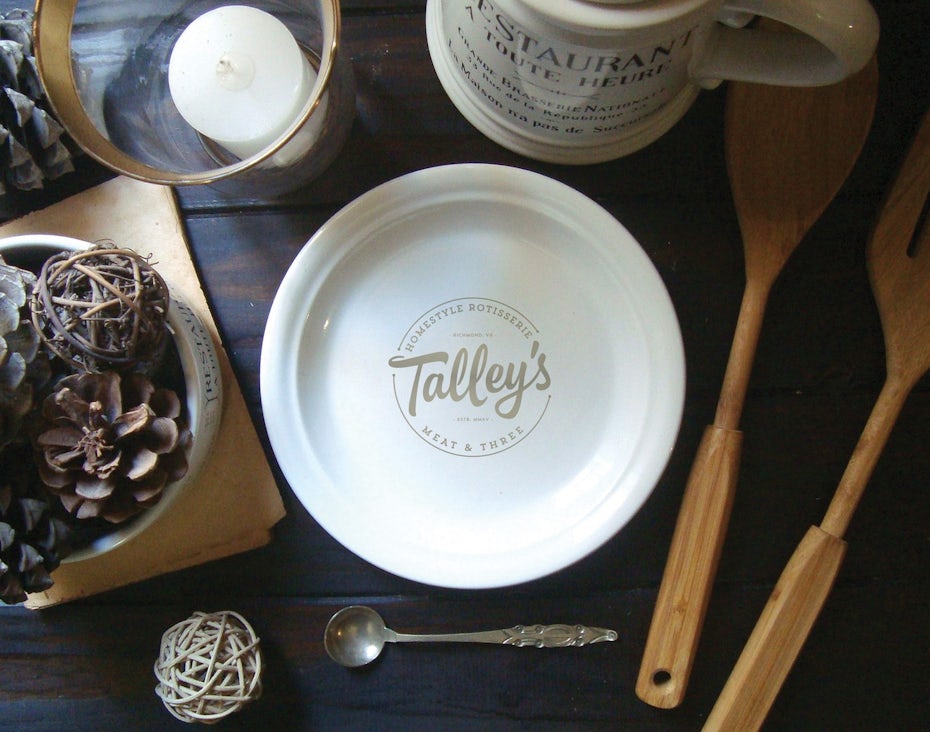
Takeaway items
From bags and cups to business cards and merchandise, your restaurant will have several items that customers can take, share and keep. Extend your brand onto all of these items to boost your restaurant’s memorability.


The secret ingredient? Great restaurant branding.
—
With so many little details that go into restaurant branding, you’ve got your work cut out for you. But as you dream, create and build, don’t forget these three guidelines: Always be consistent with your message, receptive to feedback and never let go of your authenticity.
The post Restaurant branding: the complete guide appeared first on 99designs.
No comments:
Post a Comment